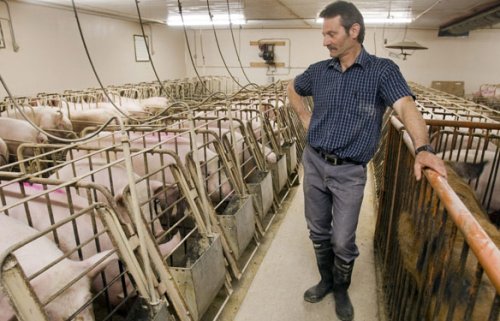
Edmonton Journal | July 19, 2010
When EU talks trade, it receives more than it gives
Canada must be wary during CETA negotiations
By Peter Clark
Canadian and EU negotiators were meeting again last week in Brussels for the fourth round of negotiations on the Canada-EU Comprehensive Economic and Trade Agreement (CETA). International Trade Minister Peter Van Loan is also wrapping up a European tour to promote Canada-EU relations to "highlight Canada’s competitive advantages to European partners."
Will the CETA negotiations be deeper and broader than NAFTA? CETA is Canada’s biggest bilateral initiative since NAFTA. But how much exuberance is warranted?
The reality is that Canada wants CETA more than Europe needs it. Europe recognizes this and will use its leverage to extract a high price. Canada must ensure the selling of this deal is more than negotiator’s "puffing" and that Canadians will get what they are paying for.
Concluding CETA is important — particularly to multinationals already inside the EU regulatory system through investments or partnering.
For example, the United States is concerned about small and medium enterprises not being able to cope with the administrative and compliance burdens imposed by EU regulatory schemes like REACH — the Registration, Evaluation, Authorization and Restriction of Chemical substances. U.S. trade officials consider that inability to cope with the regulations will encourage greater investment and production in Europe. Canada has similar concerns.
REACH regulates chemicals on their own, in preparations and in products, and impacts virtually all industrial sectors. The joint Canada-EU scoping report, which identified potential benefits from increased trade and economic integration, says REACH will undoubtedly impact trade in ways which cannot easily be anticipated.
The EU has a very clear shopping list. But what will Canada get? Is everything really on the table as advertised? Canada needs to balance the cheerleading from advocates for CETA with comprehensive, hard-nosed analysis. Canada needs to take off the blinders to the problems and barriers which will not be addressed by CETA and recognize that blind faith and hope are not sound negotiating strategies.
Nor does CETA live up to advance billing when it comes to agriculture. Canadian farmers and ranchers hope for big gains from CETA. But Europe is not the biggest open market for farm products. It is the biggest rigged market. And the main rigging mechanism is the Common Agricultural Policy known as the CAP.
Europe imports only 2.7 per cent of its consumption of dairy products, and 4.9 per cent of its meat consumption. The worst example is pork, where the EU imports less than one per cent of what it consumes. Action on export subsidies must wait for a Doha (WTO) result which may never happen. Free trade is not only about removing tariffs. It must also discipline and remove production and trade distorting subsidies which stimulate production and exports while inhibiting imports.
Canadian beef and pork farmers and ranchers have been hard hit by U.S. country-of-origin rules (COOL). They need to export more to Europe and Europe has lots of room to do this.
In addition to miserly market access for beef and pork, the EU is actively considering its own country-of-origin labelling laws. Such regulation which plays on consumer fears will be the trade nightmare of the next decade.
"Everything is on the table" has become a mantra in CETA. But this is never the case in any negotiation. Negotiations are about exclusions. CETA is no exception.
EU officials claim that everything is on the table in agriculture and that their WTO positions are either not relevant, or will not preclude WTO-plus concessions for Canada. This is not true. EU deputy chief negotiator Philipp Dupuis confirmed in Ottawa on April 26 that domestic support under the CAP was not on the table.
Canada’s chief negotiator, Steve Verheul, told a meeting of trade experts in Ottawa on June 7 that there had been no discussion of agricultural or fisheries subsidies.
Canadian farmers are accustomed to rather meagre risk-management support. The EU standard is risk elimination. The deep-pockets EU approach will not change any time soon.
How deep are their pockets?
According to Solidarite, EU CAP spending based on WTO rules was 85 billion euros (about $115 billion Cdn) in 2006 — some 20 billion euros more than was notified to the WTO.
Canadian negotiators need to bear in mind how pervasive, changeable and intrusive European regulation is — Saskatoon berries may not be imported into Europe. European parliamentarians want to impose animal welfare and environmental rules on FTA partners. The so-called precautionary principle is a cornerstone of European regulation. The agreement is only as good as the ability to enforce it.
Canadian politicians must instruct their negotiators not to rush into a deal just for the sake of being able to claim an apparent victory. Canada needs to lose the blinders and ensure we do not give more than we get.
Peter Clark is an international trade consultant and president of Grey, Clark, Shih and Associates, Limited in Ottawa. The above is an excerpt from his submission to the Commons and Senate Trade and Agriculture Committees.